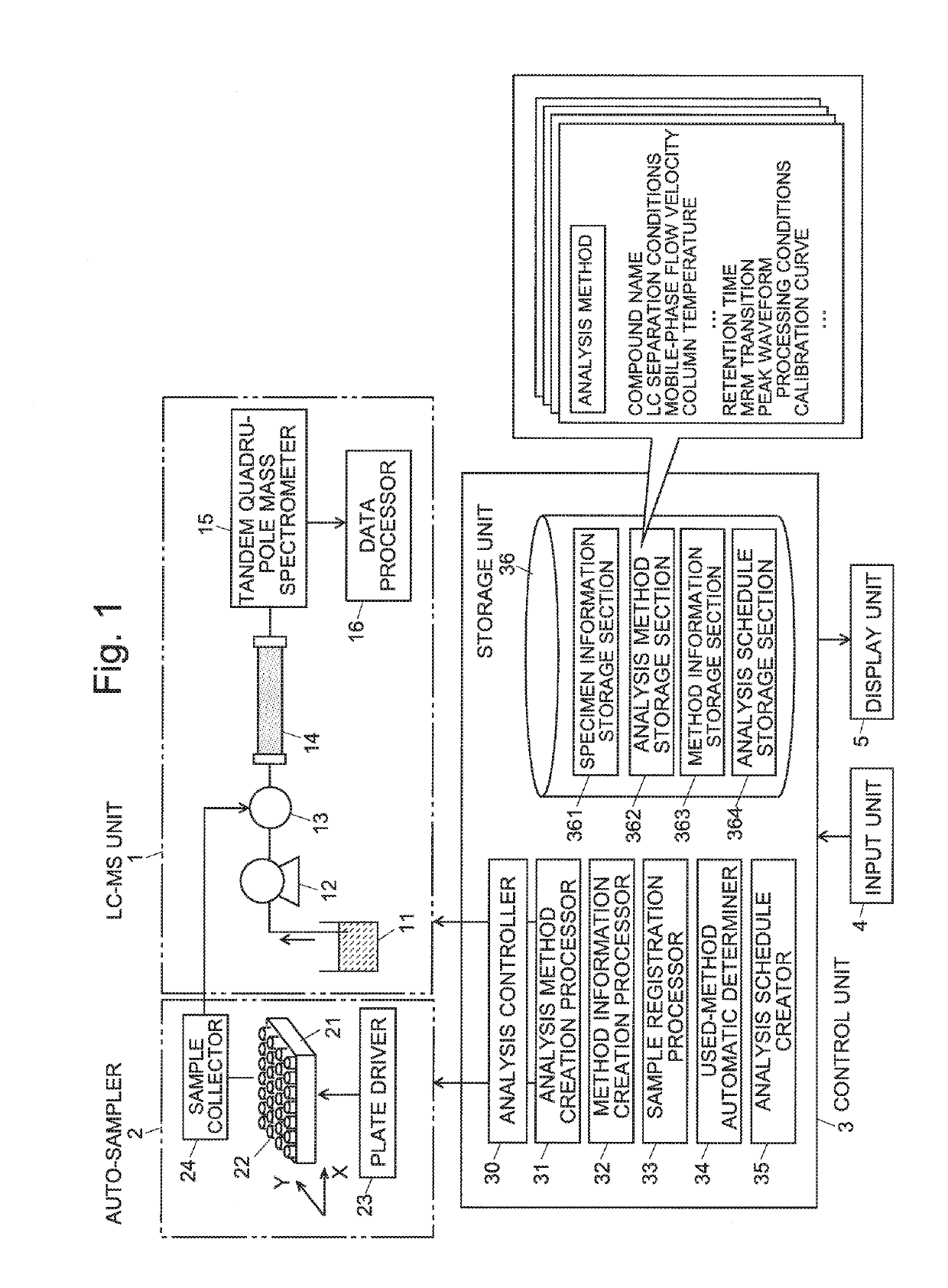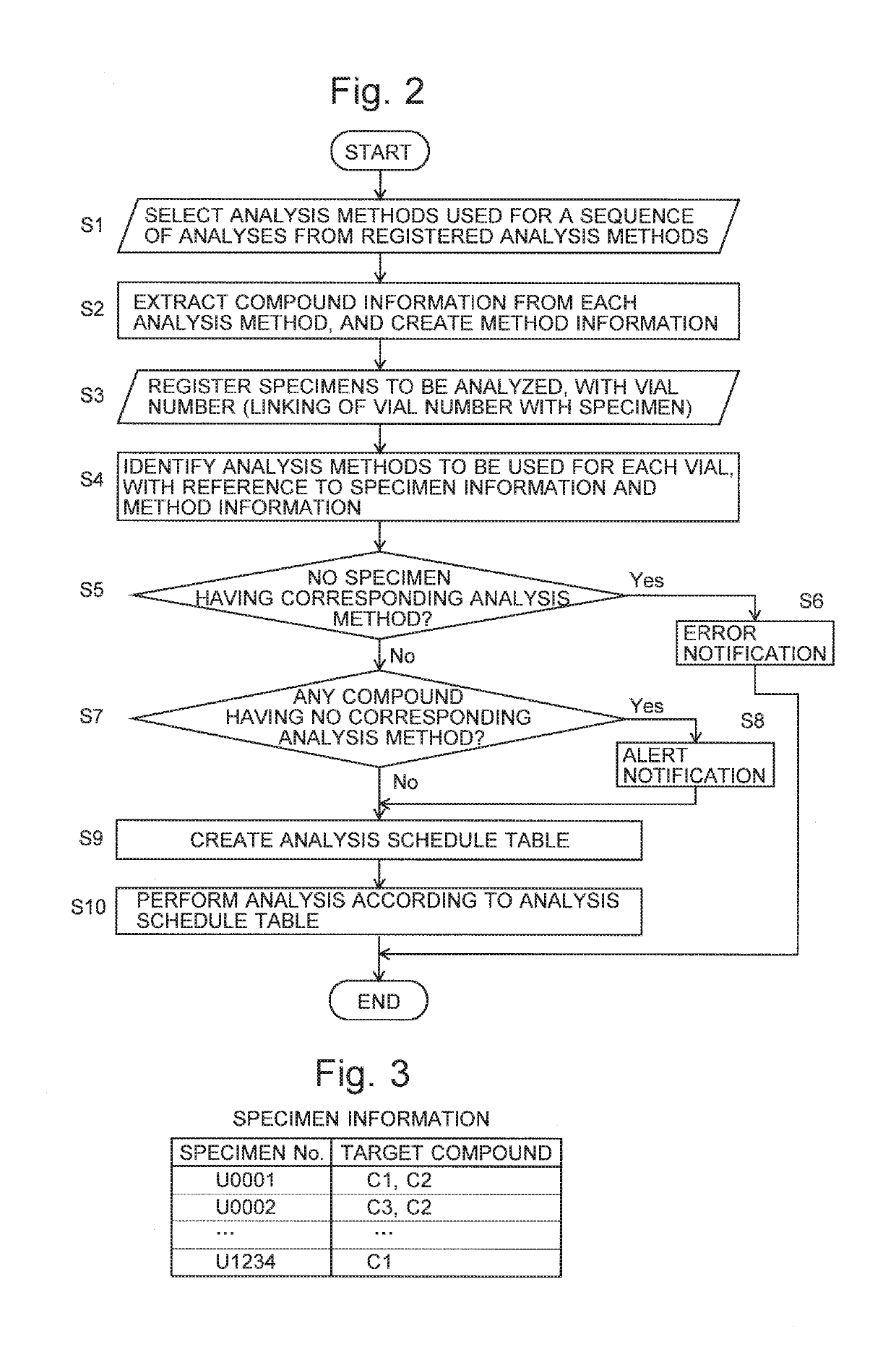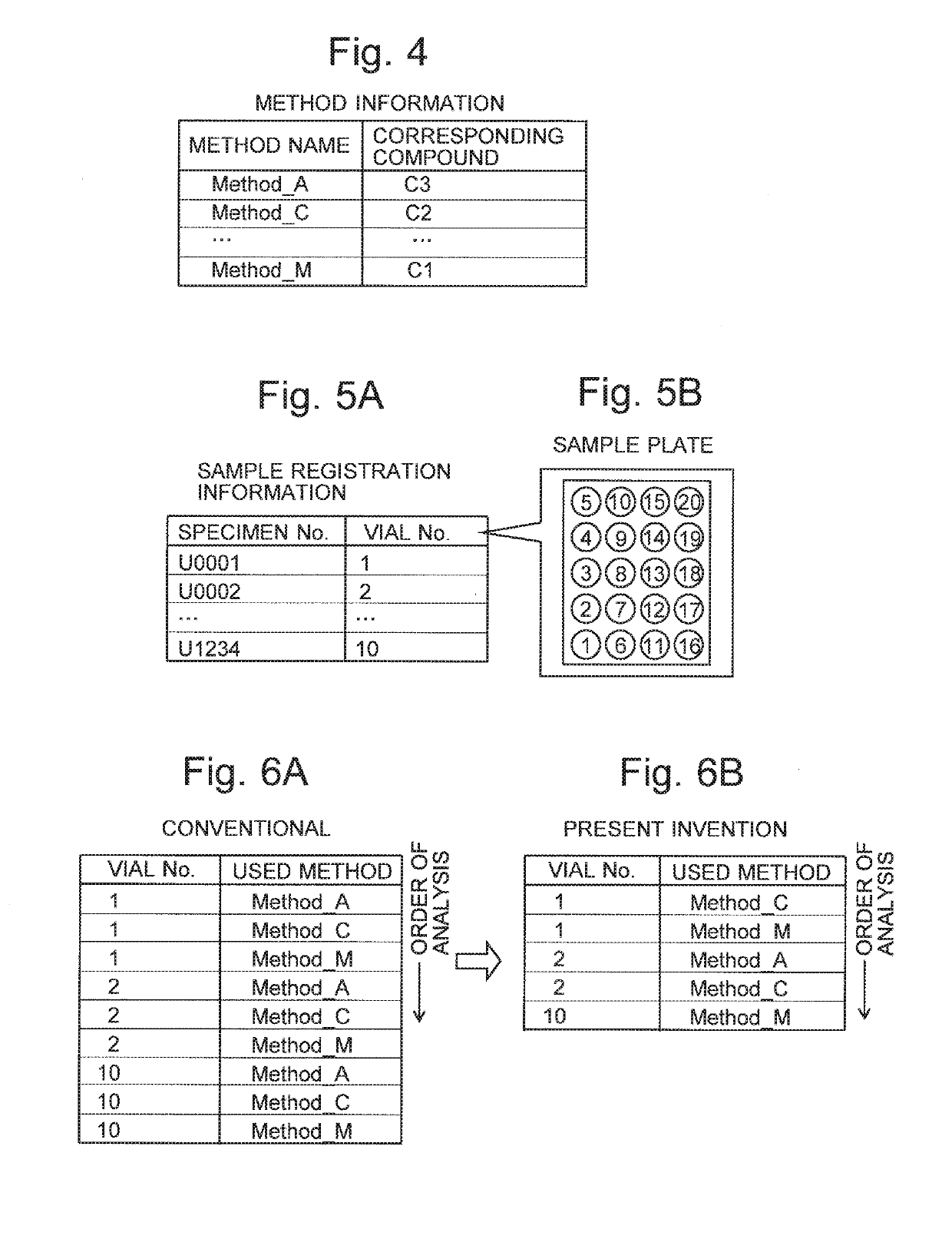Analyzing-device controller
a technology of analyzing device and controller, which is applied in the direction of measurement device, scientific instruments, instruments, etc., can solve the problems of increasing complexity of analysis conditions, waste of specimens, and practically useless analysis, so as to reduce the use of specimens, improve the efficiency of analysis tasks, and reduce the effect of mobile phase and other consumed substances
- Summary
- Abstract
- Description
- Claims
- Application Information
AI Technical Summary
Benefits of technology
Problems solved by technology
Method used
Image
Examples
Embodiment Construction
[0039]One embodiment of an LC-MS analyzing system using an analyzing-device controller according to the present invention is hereinafter described with reference to the attached drawings. FIG. 1 is a schematic configuration diagram of the LC-MS analyzing system according to the present embodiment.
[0040]This LC-MS analyzing system includes: a liquid chromatograph mass spectrometer unit (LC-MS unit) 1 which temporally separates the compounds contained in a sample solution (specimen) and detects those compounds; an auto-sampler 2 which sequentially selects one of a number of previously set vials 22 and supplies the sample solution from the selected vial 22 to the LC-MS unit 1; a control unit 3 which controls the operations of the aforementioned units; and other relevant units.
[0041]The LC-MS unit 1 includes: a mobile phase container 11 holding a mobile phase; a pump 12 for drawing the mobile phase from the mobile phase container 1 and supplying it at a substantially constant flow veloc...
PUM
| Property | Measurement | Unit |
|---|---|---|
| liquid chromatograph | aaaaa | aaaaa |
| gas chromatograph | aaaaa | aaaaa |
| mass spectrometer | aaaaa | aaaaa |
Abstract
Description
Claims
Application Information
 Login to view more
Login to view more - R&D Engineer
- R&D Manager
- IP Professional
- Industry Leading Data Capabilities
- Powerful AI technology
- Patent DNA Extraction
Browse by: Latest US Patents, China's latest patents, Technical Efficacy Thesaurus, Application Domain, Technology Topic.
© 2024 PatSnap. All rights reserved.Legal|Privacy policy|Modern Slavery Act Transparency Statement|Sitemap



